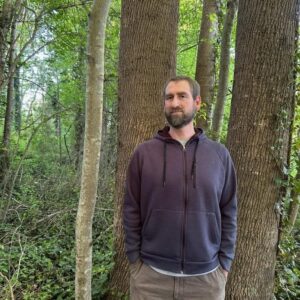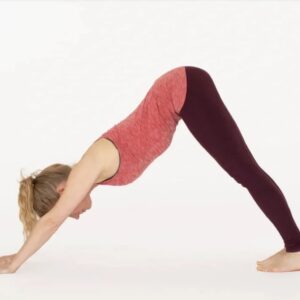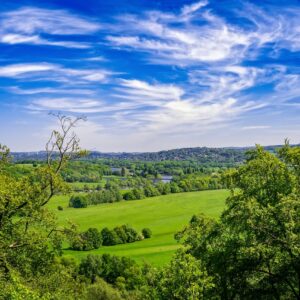When the lockdown began in March of 2020, schools closed, traffic came to a halt, and the great buzzing marketplace that had always sustained us fell silent. Though it was frightening—those blurry photos of ghostly Covid patients on ventilators in packed intensive care wards—it was also weirdly thrilling. There was an emergency on, and we’d suddenly become explorers in new, dangerous territory.
It was also strangely beautiful. Those Italian balconies where neighbors sang to neighbors over the sorrowful wail of sirens. People sewing masks for exhausted health workers still without PPE. Strangers checking up on strangers. Suddenly, it seemed, we’d discovered our True Selves, the people we were always meant to be. Bedazzled, I wondered: was this what the Apocalypse was going to be like? Were the new heaven and new earth finally on their way?
The apocalyptic default in times of trial is not limited to Christians, and in the case of the global pandemic, it resonated with people far beyond the Christian realm. Folks began cautiously wondering out loud whether this crisis had some ultimately noble purpose. Maybe we could finally start dealing with climate change—look at how quickly air pollution levels began to drop as the freeways emptied! And what about those dolphins now frolicking in the cruise-ship-free canals of Venice?
But as time went on, the warm glow of fellow feeling began to fade, along with the ecstatic vision of a new, post-crisis world. We grew sick of the need for constant vigilance and embraced denial instead. Our exhaustion was rapidly politicized, and the brief hope of blessed unity disintegrated overnight. The months following the hopeful high of the initial lockdown were marked by angry despair. What could have made us so much better had seemingly made us worse.
Time to finally read The Plague, I thought. Albert Camus’s famous 1947 novel is set in modern times in the town of Oran in French Algeria. It opens with a grisly scene of rats inexplicably dying in the streets, and within weeks, the first human cases of bubonic plague begin to appear. The town doctor must warn the local authorities that people will die by the thousands unless they take unpopular precautions.
As the plague moves into a more critical stage, the doctor, who understands perfectly well how they got into this pestilential crisis, searches instead for a why. He finds himself being tormented by an “eerie whistling in the air” and he wonders if the local priest—who has just preached a fire-and-brimstone homily on the subject—could possibly be right. Is there really an “unseen flail thrashing incessantly” (Isaiah 41:15) in the sky above the town? Is God truly “threshing” humanity, separating the worthless chaff from the valuable wheat, as the priest insisted?
Given that he does not believe in any god at all, much less one this heartless, the doctor quickly rejects the priest’s theodicy as morally repugnant. Later, as he keeps watch at the bedside of a little boy writhing in his death throes, his disgust turns to tightly contained rage. For him, the plague cannot have been in any way “intended”—it was a purely natural disaster. And because it was, he knows how vulnerable they will always be: the bacillus that causes the bubonic plague is capable of living on in bedding, old trunks, closets, until the terrible day that it once again sends out its armies of rats.
Worse, despite all the suffering they have undergone, the people may not have changed. As he watches the heedless celebrations going on in the streets below, he finds himself reluctantly agreeing with one of his patients, a cynical, wheezing old asthmatic, who predicts the survivors will be “just the same as ever.” They will not have been transformed into better people, much less into saints. But perhaps, the doctor tells himself, it is their very ordinariness that is “at once their strength and their innocence.” And perhaps it is on this level that he can feel at one with them and thus find his comfort.
I have to admit, I felt let down here. Is this all Camus could come up with after putting his characters through such hell? Was this why I was feeling so low after our own pandemic? And then I realized that the doctor had never acknowledged his own pivotal role during the terrible siege. For days after the rats begin dying in the streets, he was the one person who suspected that the “black death,” which had once killed a quarter of the population of Europe, had come back with a vengeance in modern times. He could have quietly left town before the gates were locked and traveled to the TB sanitarium where his beloved young wife had just been admitted, perhaps even preventing her untimely death. Instead, he chose to stay at his post, exposing himself day after day to the deadly bacillus. He committed himself to honoring the oath he made when he became a physician.
Clearly, I’d been swept up in the apocalyptic vision. Longing for a peaceful new world in which everyone had somehow been transformed by a single shared tragedy, I was shattered when that didn’t happen. But the lamb cannot yet lie down with the lion. Though we spend our lives seeking “the homeland of our hope,” as St. Aelred of Rievaulx calls it, we are still but pilgrims on the way.
Yet what marvelous guides emerged during the height of the pandemic! Nurses with eyes blackened by fatigue and faces creased by hours of wearing N95 masks. Teachers who overnight rewrote a whole year of curriculum for an online format. Grocery store clerks and stockers who headed off to their jobs each day, knowing the peril they faced from both virus and angry public. Scientists who worked around the clock to create a vaccine. Priests who ministered to the dying. Countless anonymous exemplars of the self-sacrificial love of Christ.
Icons of that new heaven and that new earth.
Paula Huston, a Camaldolese Benedictine oblate, is the author of two novels, seven works of spiritual nonfiction, and a history of New Camaldoli Hermitage, called The Hermits of Big Sur. She and her husband Mike live on four acres on the Central Coast of California, where they grow olives for oil.





